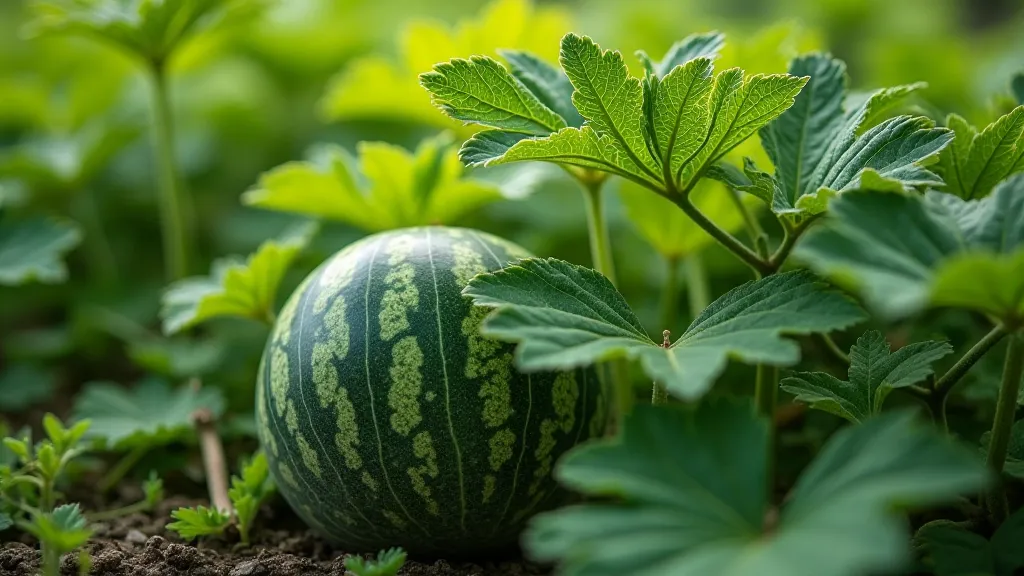The Sun's Embrace: Optimizing Light Exposure for Watermelon Flourishing
There’s something profoundly satisfying about connecting with history through tangible objects. Think of a well-loved antique accordion, its bellows worn smooth by countless hands, its keys whispering melodies of forgotten dances. Each imperfection tells a story of craftsmanship, resilience, and the shared human experience. Growing heirloom watermelons evokes a similar feeling. It’s a connection to the past, a rekindling of traditions, and a celebration of the delicious, unique flavors that commercial agriculture has often pushed aside. But just as an accordion's beautiful sound depends on the meticulous interaction of its components, a bountiful watermelon harvest hinges on a critical element: the sun’s embrace.
For generations, families have passed down seeds – treasured heirlooms in their own right – of varieties like ‘Black Diamond’, ‘Moon and Stars’, and ‘Georgia Jet’. These aren't your average supermarket melons; they are testaments to a time when flavor and character were prioritized over uniformity and shelf life. To ensure these living legacies thrive, we must understand their fundamental need: abundant sunlight.

The Solar Geometry of Sweetness
While all plants require sunlight, watermelons are particularly demanding. They're classified as full-sun plants, meaning they need at least six to eight hours of direct sunlight daily. However, simply providing that minimum isn’t always enough. The quality and angle of that sunlight significantly impact growth and fruit development. Think of it as a subtle dance of solar geometry – the angle at which sunlight hits the plants changes throughout the year, and understanding this is key to maximizing yield.
During the peak of summer, the sun hangs high in the sky, providing intense, nearly overhead illumination. This is ideal for watermelon growth, as the leaves receive the most direct light possible. However, as we move towards spring and fall, the sun's angle becomes lower, and shadows lengthen. This means careful site selection and potentially even creative solutions to ensure your watermelons aren’t shaded by trees, buildings, or even taller plants.
Site Selection: The Foundation of a Sunny Harvest
Choosing the right location for your watermelon patch is the most crucial step in optimizing sunlight exposure. Ideally, you want a south-facing slope (in the Northern Hemisphere) or a north-facing slope (in the Southern Hemisphere). This allows the plants to receive the most hours of direct sunlight throughout the day. A slight elevation can also be beneficial, as it can help to improve drainage and reduce the risk of frost damage.
Observe your yard throughout the day. Track where shadows fall and when. Notice how buildings and trees impact sunlight patterns. A seemingly sunny spot in the morning might be shaded by a neighboring house by afternoon. Take the time to truly understand your microclimate – that localized area's specific weather conditions – it’s worth the effort. The journey of a successful watermelon harvest is as much about observation and adaptation as it is about direct action.
Consider the surrounding landscape. Taller plants, like corn or sunflowers, can provide shade and competition for sunlight. While companion planting can be beneficial in some cases, it's important to ensure that your watermelons are not being overshadowed. The sheer size of a mature watermelon vine demands a generous amount of space to thrive. It’s fascinating to see how diverse approaches to planting can impact the end result. For those interested in exploring complementary planting strategies, a deeper dive into companion planting for watermelons reveals a wealth of information.
Creative Solutions for Shady Spots
Not everyone has the luxury of a perfectly south-facing slope with unobstructed sunlight. But don't despair! There are several creative solutions you can employ to improve sunlight exposure.
Reflective Surfaces: Strategically placed reflective surfaces, such as white gravel, silver tarps (use sparingly to avoid overheating), or even white painted walls, can bounce sunlight onto your watermelon plants. This is particularly useful in areas with limited sunlight or where buildings cast shadows.
Pruning: If trees or shrubs are casting shadows, consider pruning them to allow more sunlight to reach your watermelon patch. This is a delicate balance, as you don’t want to damage the trees or shrubs, but a little judicious pruning can make a big difference.
Raised Beds: Building raised beds can elevate your watermelons above ground-level obstacles, allowing them to receive more sunlight. This is particularly useful in areas with uneven terrain or where shrubs and bushes are encroaching on the planting area.

Understanding Leaf Orientation and Growth Habit
Watermelon vines exhibit a fascinating growth habit – they tend to orient their leaves to maximize sunlight exposure. The broad, flat leaves are incredibly efficient at capturing light, and they will literally twist and turn to follow the sun's path. Observing this behavior can give you valuable insight into whether your plants are receiving adequate sunlight.
If you notice your watermelon vines consistently leaning in one direction, it's a clear indication that they're searching for more light on that side. This is a signal to adjust their position or address any shading issues. This constant adaptation highlights the plant's profound connection to its environment, a testament to the resilience of nature. The very essence of cultivating these fruits is about understanding and working *with* these natural processes, rather than against them.
The Connection to Craftsmanship and Restoration
The meticulous attention required to optimize sunlight exposure for heirloom watermelons mirrors the care and skill involved in restoring an antique accordion. Both endeavors demand a deep understanding of underlying principles – the interplay of light and leaf structure in the case of watermelons, and the complex mechanics of bellows, reeds, and keys in the case of an accordion. The dedication and artistry required to revive something old and cherished is palpable in both scenarios – a shared pursuit of bringing beauty and functionality back to life.
Just as a skilled accordion restorer carefully cleans, repairs, and adjusts each component to restore its original beauty and functionality, a successful watermelon grower must observe, adapt, and refine their techniques to ensure optimal sunlight exposure. Both are acts of preservation, a reverence for the past, and a celebration of human ingenuity. The process of cultivating these fruits, much like restoring a musical instrument, is about more than just the final product; it’s about the journey, the challenges overcome, and the deep connection to a tradition.
Think of the patience required to coax a dormant reed back to life, or to painstakingly repair a cracked bellows. It’s the same dedication needed to nurture an heirloom watermelon plant, providing it with the precise conditions it needs to flourish. Both endeavors offer a sense of deep satisfaction – the thrill of hearing a forgotten melody brought back to life, or the joy of biting into a perfectly ripe, intensely flavorful watermelon. The flavor and richness of a well-tended watermelon truly embodies the legacy and love poured into its growth, much like the melodies brought back to life through meticulous restoration.

Beyond the Basics: Sustaining Heirloom Varieties
Growing heirloom watermelons goes beyond simply maximizing sunlight; it’s about ensuring the continuation of these invaluable genetic treasures. Consider the remarkable journey these seeds have taken, passed down through generations, each carrying a story of resilience and adaptation. The effort to secure their future is a crucial part of preserving our agricultural heritage.
The ongoing work of breeders is vital to maintaining these varieties, adapting them to changing climates and pest pressures. Focusing on breeding heirloom watermelons for future generations isn't just about improving yield; it's about safeguarding a unique piece of our cultural and culinary history. The delicate balance of preserving authenticity while ensuring viability is a constant challenge, demanding both scientific expertise and a deep respect for tradition.
A Labor of Love, a Harvest of Flavor
Growing heirloom watermelons is more than just gardening; it's a labor of love, a connection to history, and a celebration of flavor. By understanding the fundamental importance of sunlight and taking the time to optimize exposure, you can unlock the full potential of these remarkable plants and experience the joy of harvesting a truly exceptional crop. It's a journey that rewards patience, observation, and a deep appreciation for the sun's embrace. The journey from seed to fruit is a testament to the power of nature, the beauty of tradition, and the satisfaction of connecting with the past through a delicious, tangible reward.





